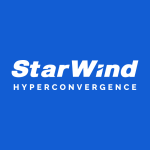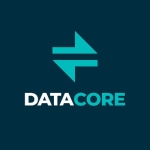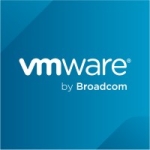Nutanix is hyper-converged infrastructure, which is currently a major concern in the world of IT. New players are appearing in hyper-converged infrastructure like Simplivity, VMware EVO: Rail, EMC ScaleIO, and so forth.
Waht is Hyper-Converged?
Hyper-Converged is the solution to combine Computer (Server), Storage and Networks in one solution or in one hardware. This solution will reduce complexity of the management and also the price. So like in Nutanix, the 2 U Server, in which there are four independent servers (nodes), who each have 2 Socket CPU, RAM, 2x10GbE, 2x1GbE, 6 Disks. Bringing the total in 2U Server (Series NX-3450) there are 80 CPU Cores, 2TB RAM (assuming 512GB per node), 8x10GbE and 16TB SATA Row, Row 3.2TB SSD.
Storage in Nutanix (Converged Storage), reduces the complexity of the storage layer, because it does not need LUN, Volume, Zoning, etc as when we configure FC Storage. Storage in Nutanix is NFS, NFS is the benefit of reducing the overhead of the disk groups and LUNs.
Nutanix Architecture
Inside there is a term Nutanix nodes and blocks.Block is a 2U rack mount chassis in which there are four nodes.Hardware Nutanix is OEM Super Micro or Dell.
In each of these nodes are Nutanix Controller VM (CVM). CVM is a storage appliance or controllers which use VMware Direct Path for direct access to the LSI Disk Controller. This is what allows the CVM to control the disks directly without passing through the hypervisor (ESXi or Hyper-V or KVM). Nutanix does not use RAID and no RAID Controller therein. Nutanix Distributed Files System (NDFS) algorithm is owned (proprietary) by Nutanix system for distributing files or replicating data to each Node. NDFS is a similar technology as used by Googles Files System, Facebook and other Web-Scale Technology.
Hypervisor is installed in the SATA DOM (Disk on Motherboard) module. So there is a flash chip in the motherboard 64GB per node (read article unboxing Nutanix). CVM is a VM running on the hypervisor, which has the configuration of 8 vCPUs and 16-24GB RAM.CVM has two vNICs that one vNIC to connect to the production network and one vNIC to connect to a private vSwitch. Private vSwitch VMkernel adapters have and currently do not have physical network adapter (Punic). Private network used for communication from the host to the CVM for mounting NFS datastore of Nutanix Storage Cluster.CVM uses public vNIX for communication between the CVM in other nodes and also for monitoring cluster plus replicate data.
The figure below is a diagram per Node:

And the image below is a diagram per Cluster Nutanix:

And some of the questions often asked are:
- What happens when CVM failure in one node? Autopathing will redirect IO to the CVM in other nodes in the same cluster.
- What happens when a disk failure on one node?Nutanix Storage Cluster will "sustain" the current single disk failure, and the system will redistribute data through Cluster.When the rebuild or redistribution is complete it will Cluster Healthy back.This process is very fast (ms).
- What happens when one node failure?The process is almost the same as point 2, the data will redistribute within the Cluster.Only this process Nutanix uses MapReduce to speed up the process.If we have three nodes in one cluster, then only allowed one node failure.Therefore, at least 3 nodes required to form 1 Nutanix Cluster.
Management Console
Management Console in Nutanix is PRISM.PRISM is a web interface as shown below.

The first time we log in, then the initial menu as shown above.Visible top left is the ESXi hypervisor is installed, if you use Microsoft Windows, the look is Hyper-V.Then also seen versions of ESXi, below is the total storage capacity, a total of VMs (VMs 230), total node (5) and total blocks (2).In the middle column visible performance monitoring IOPS, bandwidth, CPU and Memory.And the rightmost column is the Events and Alerts.
Top left corner there is a drop down menu (Home), then I moved to the Storage menu Diagram View.It will appear as shown below.

Now we move to the VM menu, which will give us the details of the VM is running in the cluster.Seen there total VM, total CPU and Memory.Then there is also a report by IOPS, Latency IO, Memory Usage and CPU Usage.

Then we move to the VM Table, it is seen in detail per-VM, as shown below. If we look at the information that there is, then I think this function together with VMware vCenter Ops, which did not exist just Forecast Analysis. Here we can search the VM and then perform analysis per-VM performance based on CPU, Memory, IOPS, Latency, or Network.

And now we move to the Storage menu Diagram.Seen all information relating to such Usage Storage, IOPS, bandwidth IO, IO Latency. And in the top right corner, there are two menus of "Container" and "Storage Pool".
Storage Pool, is the union of all disks that exist in all Nodes.Container is as Datastore. We can make some Container in 1 Storage Pool.As with traditional storage, we can make some LUNs in 1 Disk Group.

Interestingly here is Nutanix without RAID but using NDFS, no volume or LUNs. For example, we will create one Container, then I click menu in the top right corner Container, the menu will appear below.

Interestingly, we we would like to mount the new container to multiple hosts / nodes, we just need to do the check as shown below.Imagine if we use the SAN, must do Zoning first, then setting WWN ID to each of the hosts, and so on.

And we can compress or dedup the container that we have made, and only one click then completed as shown below. Interesting is it not it?

And no less, that is build-in replication. We can do replication N-Way means can perform replication to 3rd place (A-> B-> C) upto 6th place (A-> B-> C-> D-> E-> F). Which greatly facilitates that we can do per-VM based and fixed per block-level replication. Imagine in traditional storage, replication must be done LUN to LUN.So if there are 50-VM per LUN, then total all 50 VM will be replicated to the LUN in the DR Site.Replication in Nutanix, can be integrated with VMware SRM.

Likewise reviews Nutanix, although not as complete but could be an additional complete our knowledge. And we will come back to a Nutanix detailed discussion at a later time.
Thanks to Nutanix for allowing me to "box-test" Nutanix lab in Singapore.
I would like to thank the team for greater Nutanix Reviews their help in providing the access to Reviews their lab and willingness to answer questions during our process.
Disclosure: My company does not have a business relationship with this vendor other than being a customer.


























